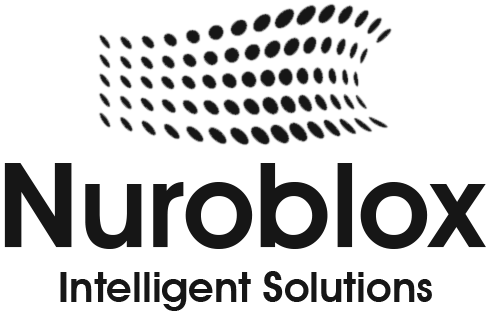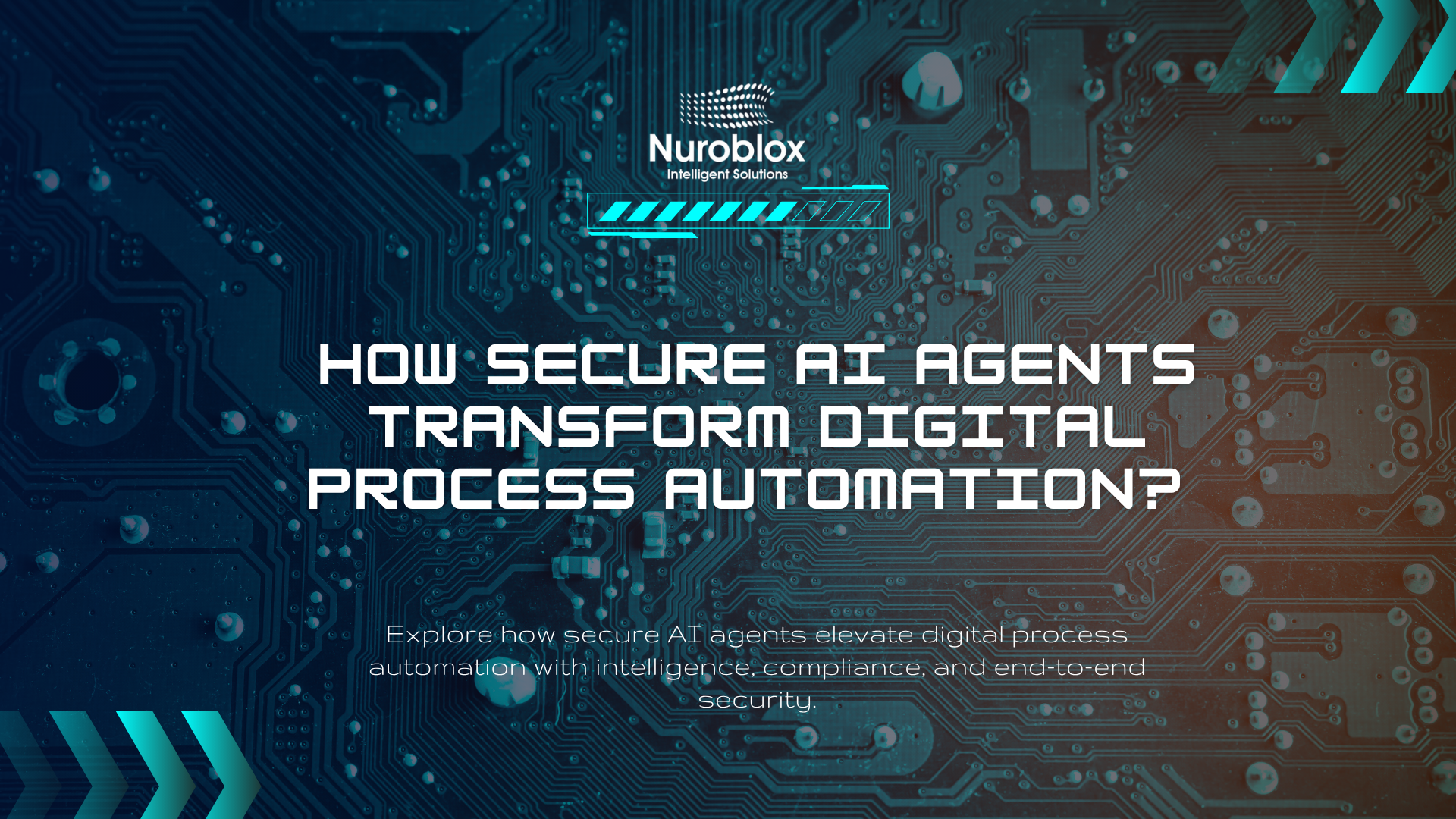How Secure AI Agents Transform Digital Process Automation?
In the relentless pursuit of enterprise efficiency, businesses have long turned to Digital Process Automation (DPA) to streamline operations and cut costs. Yet, as automation weaves itself deeper into the fabric of core business functions, a critical tension has emerged. The very tools meant to create value are also creating unprecedented risk, exposing sensitive data and opening new attack surfaces. While 96% of leaders agree that automation is vital for digital transformation , traditional approaches are no longer sufficient in an era where a single data breach can have catastrophic consequences.
This is where the paradigm shifts. The future of automation isn’t just about doing things faster; it’s about doing them with inherent, unbreakable security. Enter Secure AI Agents the next evolution of enterprise automation. These are not merely sophisticated task-bots; they are autonomous, intelligent entities engineered with a security-first architecture. They transform Digital Process Automation from a potential liability into a fortified, strategic asset, enabling businesses to innovate at speed without compromising on safety.
Why Traditional DPA Falls Short?
Digital Process Automation (DPA) evolved from earlier technologies like Business Process Management (BPM) and Robotic Process Automation (RPA). While RPA focuses on automating discrete, repetitive tasks, DPA aims higher – to redesign and automate complex, end-to-end business processes. The goal is to build agile, resilient operations by eliminating bottlenecks, digitizing workflows, and providing real-time performance visibility.
However, as DPA solutions become more integrated with critical systems, they often inherit and amplify existing security vulnerabilities. Traditional automation can create significant risks –
- Expanded Attack Surface – Automating workflows that touch sensitive data such as customer PII, financial records, or intellectual property without adequate safeguards creates new entry points for cyber threats.
- Data Exposure and Leakage – When automation platforms send proprietary data to external, third-party servers for processing, organizations lose control, increasing the risk of data leaks and non-compliance with regulations like GDPR and HIPAA.
- New Avenues for Attack – Cybercriminals are now leveraging AI to orchestrate more sophisticated attacks, including advanced phishing, data manipulation, and novel malware, targeting the very automation systems designed for efficiency.
What Are Secure AI Agents?
A secure AI agent is fundamentally different from a standard automation script. It is an autonomous system that not only performs complex tasks but also ensures that privacy, compliance, and data protection are woven into every action it takes. Its architecture is not built with security as an afterthought but as its foundational principle.
Principle 1 – Data Sovereignty Through In-Environment Execution
The cornerstone of a secure AI agent is its ability to operate entirely within an organization’s secure perimeter. Platforms like Nuroblox enable AI workflows to be executed directly in the enterprise’s private cloud or on-premise environment. This “in-environment execution” ensures that sensitive information be it financial reports, R&D data, or customer details is never transmitted to an external server.
This approach guarantees data sovereignty, giving an organization complete control over its data in alignment with internal governance policies and external regulations. By processing data at its source, the risk of leakage is drastically reduced, and it eliminates the possibility of proprietary information being used to train public AI models.
Principle 2 – A Zero-Trust Architecture by Default
Traditional security models often assume that anything inside the corporate network can be trusted. A Zero-Trust Architecture (ZTA) demolishes this assumption, operating on the principle of “never trust, always verify”. For AI agents, this means every single request must be authenticated and authorized before access is granted, regardless of its origin.
This is enforced through two primary mechanisms –
- Granular Role-Based Access Control (RBAC) – The principle of least privilege is embedded at the core. Administrators define highly specific permissions, ensuring an agent can only access the exact data and functions required for its designated task. For example, an agent automating HR onboarding would have access to new hire data but would be blocked from all other employee payroll information.
- Continuous Authentication – Verification is not a one-time event. Secure AI systems continuously validate identities and permissions for every action an agent takes, minimizing the risk of an attacker moving laterally through the network after compromising a single component.
Principle 3 – Fortified with Encryption and Rigorous Input Validation
To ensure comprehensive security, data must be protected at all stages. Secure AI agents employ strong encryption protocols for all data, whether it is at rest in a database or in motion across a network. This prevents any unauthorized access during storage, transmission, or processing.
Furthermore, these agents are hardened against emerging AI-specific threats like prompt injection. By implementing rigorous input validation, the system can distinguish between trusted system instructions and untrusted user data or data from external sources. It filters out malicious instructions, control characters, and any input that doesn’t conform to expected formats, effectively preventing attackers from manipulating the agent’s behavior.
How Secure AI Agents Revolutionize Business Processes?
The shift toward secure, autonomous AI agents is already delivering quantifiable results, transforming core business functions from cost centers into drivers of strategic value.
Reinventing Finance and Administration
In finance, where accuracy and compliance are non-negotiable, AI agents are automating everything from cash flow management to invoice dispute resolution. The impact is staggering. Direct Mortgage Corp., for example, deployed AI agents to automate loan document classification and data extraction. The result was an 80% reduction in loan processing costs and a 20-fold acceleration in application approvals. This level of efficiency, achieved without compromising sensitive financial data, represents a monumental leap forward.
Supercharging Sales and Marketing
AI agents are becoming a powerful ally in driving revenue. They can automate sales forecasting, monitor social media for sentiment analysis, and deliver personalized customer engagement at scale. The productivity gains are dramatic. In one large-scale experiment, marketing teams collaborating with an AI agent boosted their productivity by 73% and produced higher-quality advertising copy. Some companies report a 30% or greater improvement in sales win rates after deploying AI agents to handle lead qualification and follow-up.
Optimizing Complex Supply Chains and Operations
In logistics and manufacturing, AI agents optimize incredibly complex systems by analyzing real-time data to predict demand, streamline inventory, and optimize shipping routes. They can monitor production lines to identify potential bottlenecks and dynamically re-route materials to prevent delays. This moves beyond simple workflow automation into the realm of intelligent, self-optimizing operations that were previously dependent on manual oversight.

Adopting secure AI agents is not merely a technical upgrade; it’s a strategic business decision that requires a deliberate, security-first approach.
Start with a Security-First Mindset
Security cannot be an add-on; it must be the foundation of your AI automation strategy. This begins by forming cross-functional teams that include experts from IT, security, and data science to ensure that governance and risk management are considered from day one. The goal is to build security into the automation lifecycle, from data ingestion to model deployment.
Adopt a Phased and Governed Implementation
Rather than attempting a complete overhaul at once, organizations should begin with low-risk, high-impact use cases to build expertise and demonstrate value. As the organization’s confidence grows, it can tackle more complex, transformational initiatives. Throughout this process, investing in robust governance frameworks is critical. This includes establishing ethical guidelines, risk management protocols, and comprehensive audit logs that track every action an AI agent takes. Automated compliance monitoring ensures that all processes adhere to relevant regulations, providing a fully traceable and auditable system.
Invest in a Future-Ready Architecture
The future of enterprise automation will be defined by hyperautomation, the strategy of automating as many business and IT processes as possible. Gartner predicts that by 2026, over 80% of enterprises will use orchestration as a fundamental part of their hyperautomation initiatives. Success hinges on creating a synchronized, intelligent operational fabric, not a collection of disconnected tools. Adopting a platform for secure AI agents is the pragmatic foundation for building a business that can adapt and thrive in an era of constant change.
Beyond Automation to Orchestrated Intelligence
The integration of secure AI agents into digital process automation marks a pivotal moment for enterprises. It resolves the central paradox of modern automation – how to unlock transformative efficiency without creating unacceptable risks. By embedding principles like data sovereignty, zero-trust architecture, and end-to-end encryption into their very design, these agents allow businesses to automate their most critical processes with confidence.
The benefits from drastic cost reductions and productivity gains to enhanced compliance and risk mitigation are no longer theoretical. As enterprises look toward 2025 and beyond, success will not be defined by who has the most AI tools, but by who can orchestrate them most effectively and securely. This is the shift from fragmented automation to coordinated, enterprise-wide intelligence.
As you scale your own automation initiatives, the critical question is no longer if you should automate, but how. Are you merely layering new tools onto old risks, or are you architecting a truly intelligent, secure, and resilient enterprise for the future?


